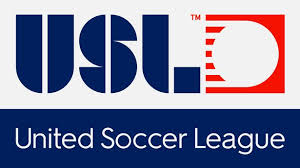February 14 – The United Soccer League (USL) has announced that they will compete with Major League Soccer (MLS) in 2027 by launching their own Division 1 sanctioned league.
While the league has yet to be named, it will give the USL a division at every level of men’s professional soccer in the United States. Currently, USL has the USL Championship which is considered Division II, USL League One, which is Division III, along with the semi-pro USL League Two, and USL Youth leagues.
USL President, Paul McDonough said: “I don’t think of it as a threat to the MLS. I think we’re just gonna go and do our business.”
By moving to three leagues USL would have a real pyramid with the natural next step of introducing the most feared phrase in American sports… ‘promotion and relegation’.
The United States Soccer Federation (USSF) sets the standards for men’s leagues and requires a Division 1 league to have at least 12 teams located across the country (Eastern, Central and Pacific time zones) with at least 75% of the teams playing in a market of at least 1 million people.
All venues must be enclosed and have a minimum seating capacity of 15,000, and the league must also demonstrate financial viability. Ownership groups are required to demonstrate they have the funds to operate a team for at least five years. In addition, a D1 club must have a broadcast contract, along with a full-time team and operations staff.
McDonough and his team recently had one eye on the NASL versus MLS/USSF trial and decided to hold off on announcing their plans until the trail was over.
“We probably were ready to go with this sooner, but with everything pending with U.S. Soccer, we just put it on hold until it was resolved,” McDonough said. “But we have to get going, so now’s the time.
USL executives met with U.S. Soccer to go over their plans, McDonough said, and “at this stage there’s no pushback from U.S. Soccer.”
“We shared our plan and our vision with them,” he said. “They were very good and asked what they could do to help.”
The USL operates a different model than MLS in that the club owners run the teams as a separate business, while MLS utilizes the single-entity model, where team owners are league partners.
“We want to try to be as close to the global game as possible,” McDonough said. “We’re not going to go into the (fall-spring) calendar, because right now it doesn’t make sense for us, but every other way, we’re a lot like the rest of the teams around the world in how they govern and are functioning themselves.”
“Today is a defining moment for the USL and the future of soccer in the United States,” USL CEO Alec Papadakis said in a statement.
“Creating a division one league is a bold step forward, expanding access to top-tier competition, deepening the connection between our communities and taking another step in aligning with the structure of the global game. By uniting people through soccer and bringing division one to more cities, we’re not just growing the sport—we’re creating lasting opportunities while building a more sustainable and vibrant soccer ecosystem in the U.S.”
How and if USL and MLS will collaborate is unclear.
Contact the writer of this story, Nick Webster, at moc.l1745312696labto1745312696ofdlr1745312696owedi1745312696sni@o1745312696fni1745312696

